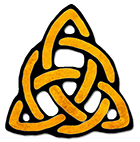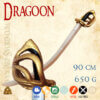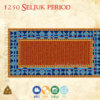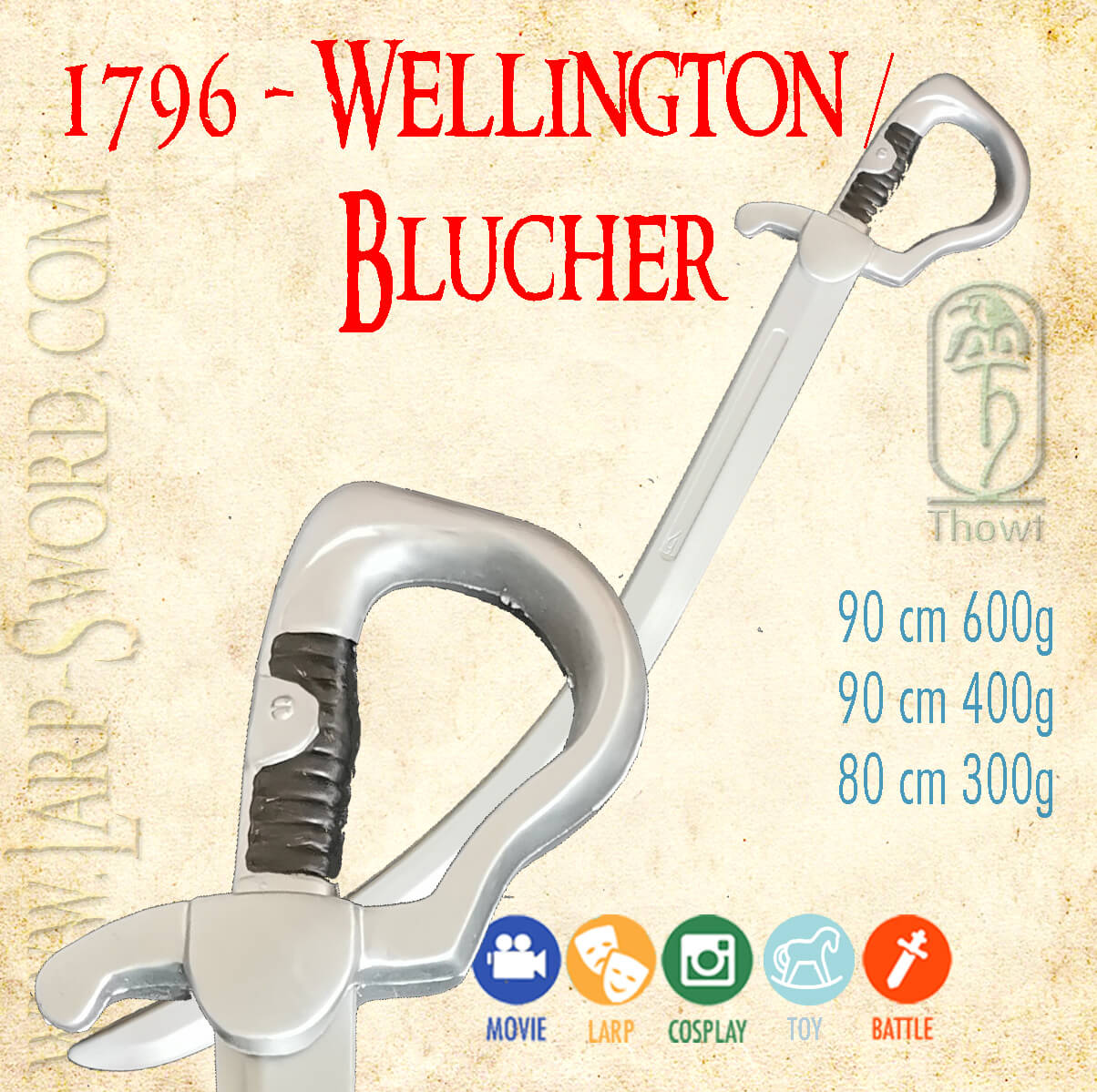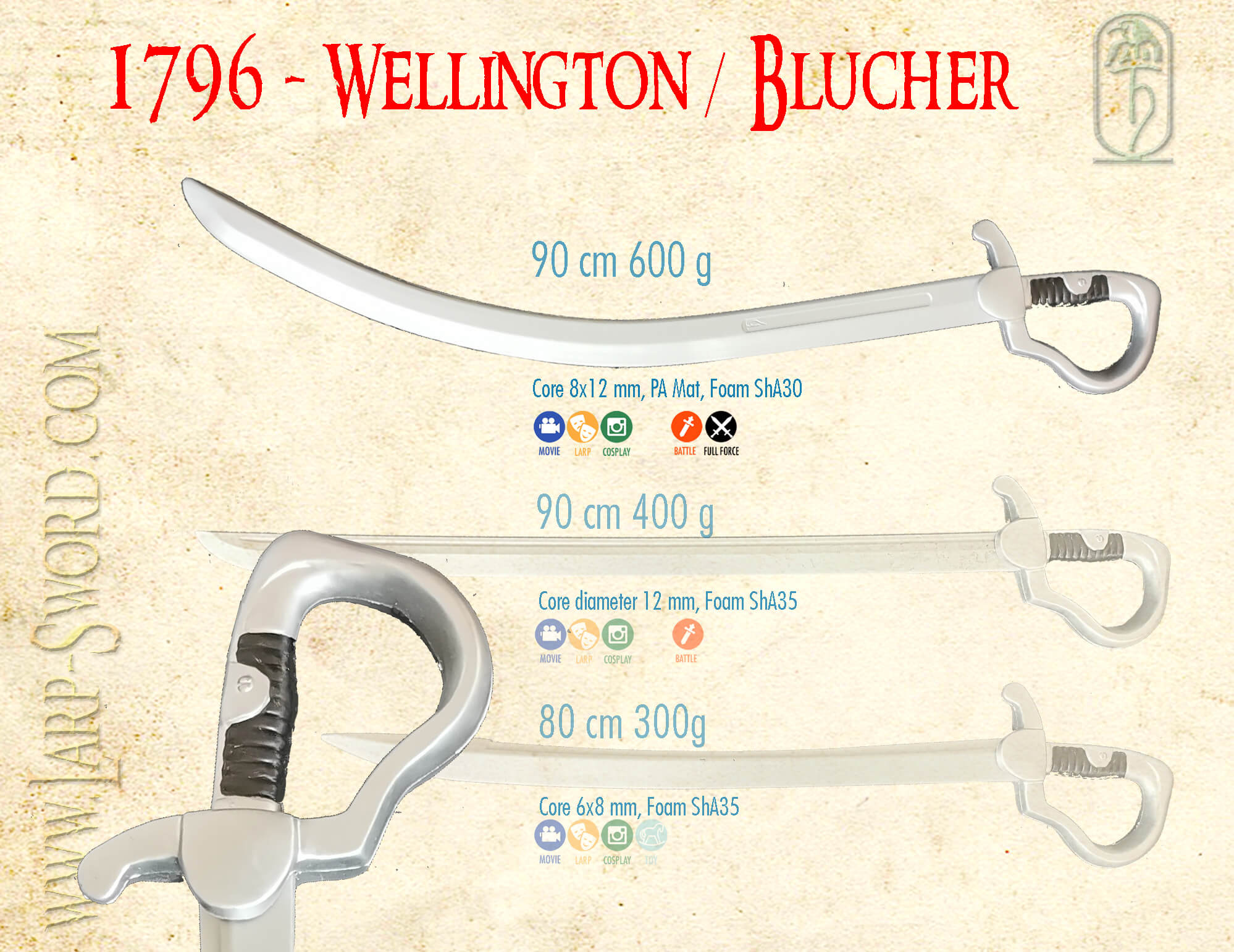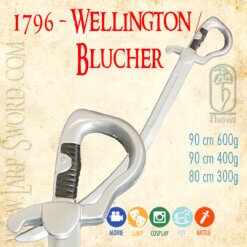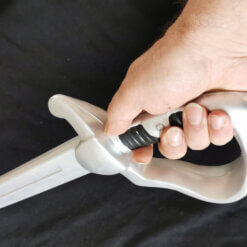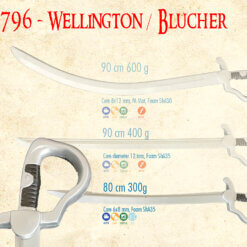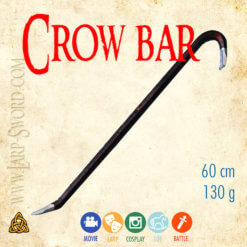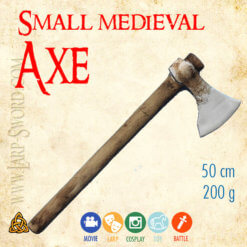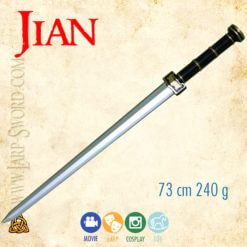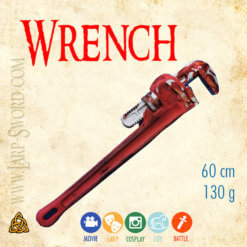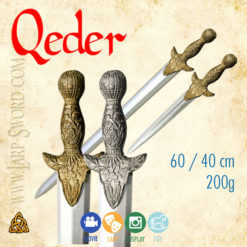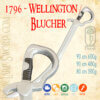Sabre 1796 – Wellington Blucher softened sabre for larp
$89.70
Sabre 1796 is an iconic sabre for hussars created during the Napoleonic Wars.
This model of larp weapon is designed to stand up to any larp battle – including full force / full contact (in English, clogs and kekel). We mark the blade as A25. It has a very durable 10 x 15 mm core. The foam used is soft (about Shore A 25) – about the same as latex. Unlike latex, however, it does not suffer from any of its ills – it is maintenance-free, usable in any weather and contains no allergens. This foam is softer, but at the same time tougher against tearing than our first generation guns that use A35 blades. A polyamide flare is routed throughout the foam to stiffen it and prevent the tip from breaking off or spreading blade tip tears. To make the blade even more resistant to tearing, the surface is reinforced with a thin layer of special polyurethane.
The weapon is quite heavy – 650 g – and is close in weight and behaviour to its real-life predecessor. The centre of gravity of the sabre is about 20 cm from the root of the blade, so it goes behind the tip – which is typical and correct for sabres.
193 in stock (can be backordered)

